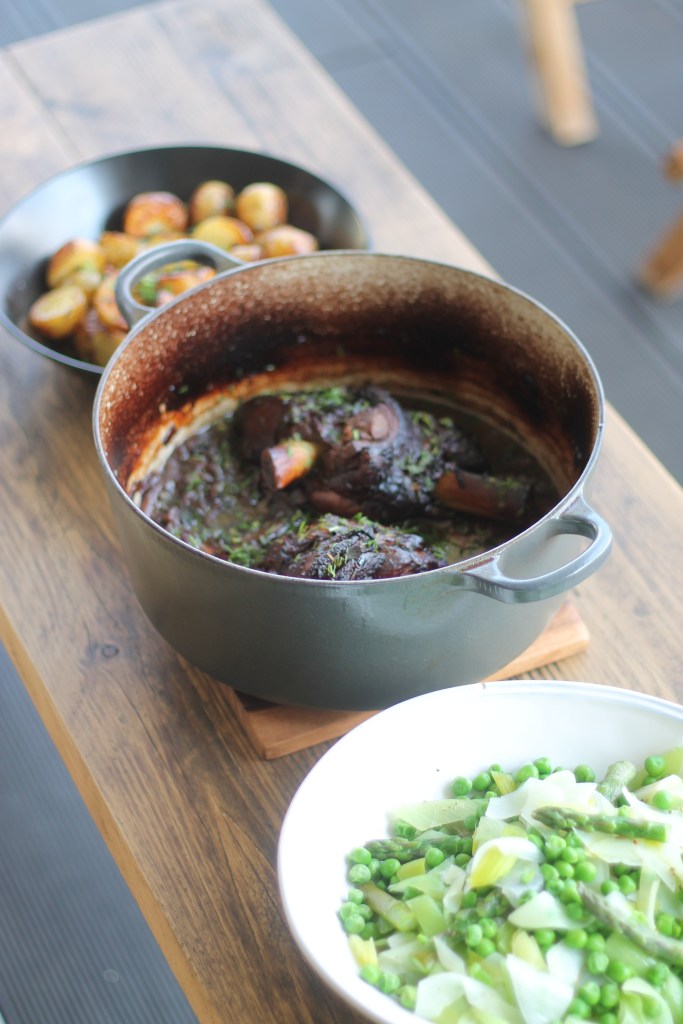

H
appy healthy Easter where ever you are…likely and I hope at home.
I’ll breeze over the obvious and get straight to the recipe. Lamb at Easter is an absolute essential for me growing up. So two lamb shanks hidden in our freezer were a winner. I bought them back from a visit home to Wiltshire a few months ago so with some classic vegetables and a special bottle of wine from the archives, we indulgenced elegantly for Easter this year and talked relentlessly about how lucky we are.
The sun was just a bonus on a glorious Easter in our cosy Brixton flat. The balcony was showing at its best and the perfect setting for our late Easter lunch. This lunch feast is a simple one to put together with minimal ingredients.



Serves 2
Lamb
- 2 x lamb shanks
- 1 red onions, sliced
- 2 large garlic cloves, roughly chopped
- 1 large carrot, roughly sliced
- 1 sprig rosemary, chopped
- 1 lamb/beef stock cube
- 250-350ml red wine
- Dill & mint to serve (optional)
- Mint sauce to serve (optional)
Potatoes
- New potatoes – enough for 2 appetites
Vegetables
- A mixture of greenery. I used 1 leek, asparagus and a handful peas for 2 people.
- Start with the lamb. Preheat the oven to 160.
- Heat a little oil in a heavy based casserole pan (like a Le Creuset). Season the lamb shanks and then sear in the pan until browning on the outside – just a few minutes, don’t spend too much time here. Remove and set aside.
- Add the onions to the pan and gently brown for about 10 minutes.
- Add the garlic, carrot and rosemary and cook for a few more minutes.
- Add the lamb back to the pan and increase the heat.
- Add the wine and simmer for a few minutes.
- Crumble over the stock cube and then top up with boiling water until the liquid just reaches about 3/4 way up the shanks. Not fully submerged.
- Cook with the lid on for 1 hour then remove the lid and continue to cook for another 1 hour 30 minutes.
- About 30 minutes before the lamb is done turn the oven tup to 190. Cut the potatoes into halves and spread on a baking tray. Season and drizzle with some sunflower oil. Roast in the oven for about 20-30 minutes until golden and crispy keeping an eye on them.
- Once done, turn the oven off and let everything sit and wait while you finish the veggie. Boil the vegetables for only 2-3 minutes, drain and then season well and add a knob of butter.
- To serve, sprinkle some chopped dill and mint over the lamb and the potatoes.
- Enjoy!






















